The nighttrain drops us off at Xi'an. East from this 8-million-inhabitant town, about thirty years ago, Chinese farmers digged out terracotta remains. A resounding discovery will follow, one of the greatest archeological discoveries of the century. Excavation will bring some 6000 life-size soldiers, archers and horses. Each of them show different features and faces, their own posture and weapon.
The 3 pits were covered with a metallic-framed roof to shelter the excavation places. We begin with the pits 2 and 3 that contain a few standing soldiers and some still dropped on the ground broken statues. A mouth-watering exhibition before the pit 1.



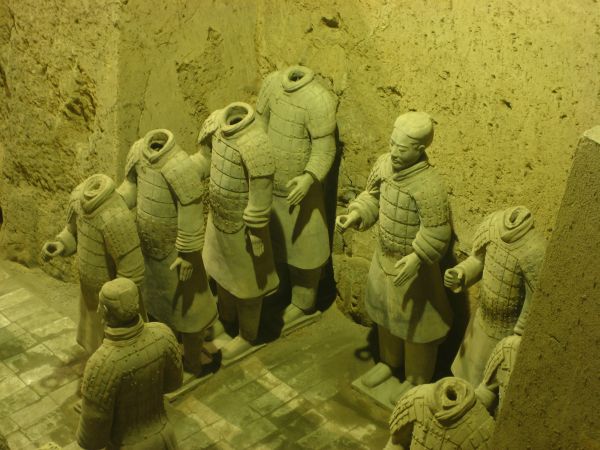
The pit 1 is immense. Equal to what there are in it. We get in the room, strong metallic ceiling hanging floodlights light the pit. We go up the stairs, move away the balustrades-congregated tourists to face this archeological jewel. An army is marching inside the stone trenches. The by-the-handrail crush disturbs the emotions of the spectacle in no way. Each individual is superb but that's their number which impresses. A horde of silent soldiers, militarily lined-up in rows and columns. The visit way goes round the arena and the look glued to the pit, we sweep over the faithful followers. Stupefying contrast between the excitement of the tourists, the jangling of the cameras and the age-old serenity of the terracotta army.
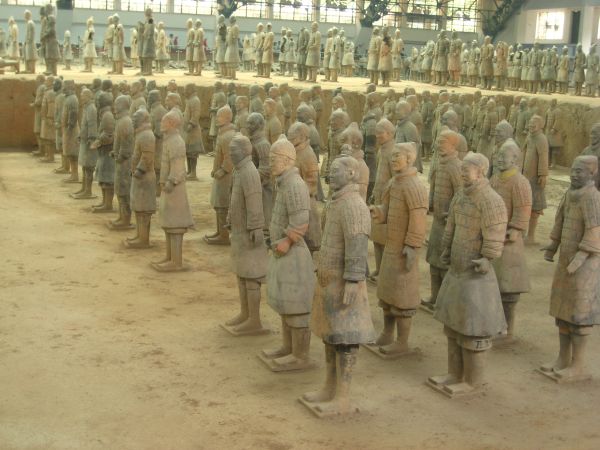

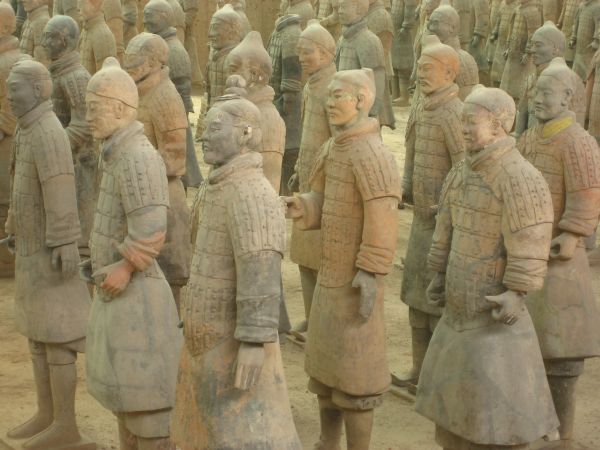

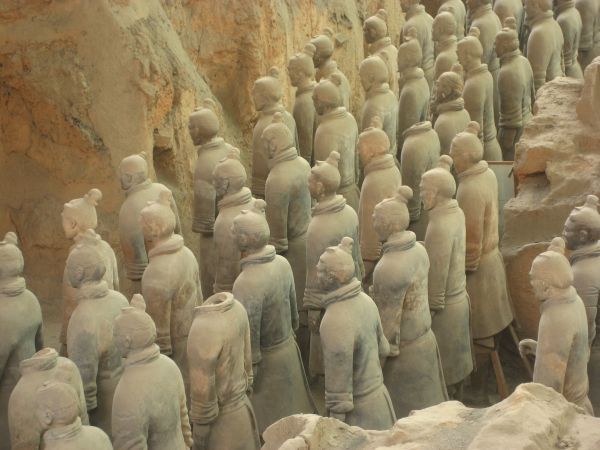
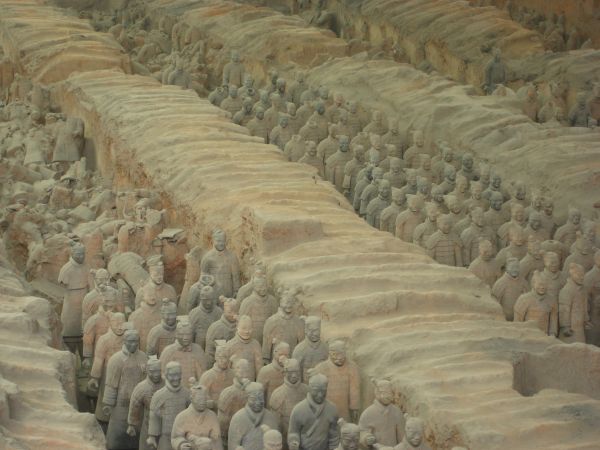
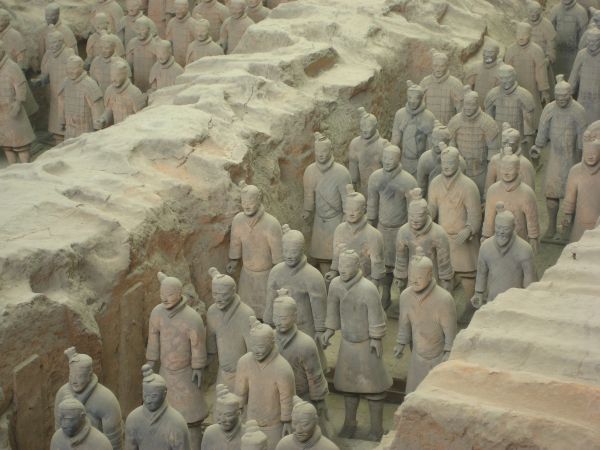

Keyword - serenity -
Saturday 4 August 2007
The terracotta army of Xi'an
By dorian on Saturday 4 August 2007, 22:37 - RTW-China
Wednesday 1 August 2007
Buddhist stroll in the Wutaishan sacred mountain
By dorian on Wednesday 1 August 2007, 19:06 - RTW-China
We go southward from Datong by taxis we specially bargained for this journey. Our first stop is at the hanging monastery. What an idea to build a monastery inlaid in the cliff ? The field below was perhaps too flat and too horizontal ?
The result is striking. Anyone would think a stone chopper fell down a temple and only half the temple stuck on the blade. The temple tour lasts a short time and in order to avoid problems of tourists crossing at several 10 meters high, we must follow the good way. From the temple, we even more realize the difficulty of its building.








The next stop is the wooden pagoda Mu Ta. 97 meters high, an impressing height for this kind of building when you know that not a nail was hammered to erect it.








We finally arrive at Taihuai, laid-back village nested down the Wutaishan valley, terminus of our journey. The Wutaishan is one of the 5 chinese Buddhist sacred mountains. The pilgrims searching for an "inside peace" lose their way among the throng of tourists poured by hordes of brand new buses. Despite the crushes and the colony of Chinese tourists, we can discover a few tranquility-favourable secluded spots. The village gathers about 15 temples and monasteries offering a great diversity of architectures and atmospheres. Discovering it on foot plunge us into this Buddhist culture. We cross the Tayuan temple, the Xiantong temple, the Luohou temple and the Guangren temple. Looking at the pictures is more digestible.























page 6 of 6 - next entries »





